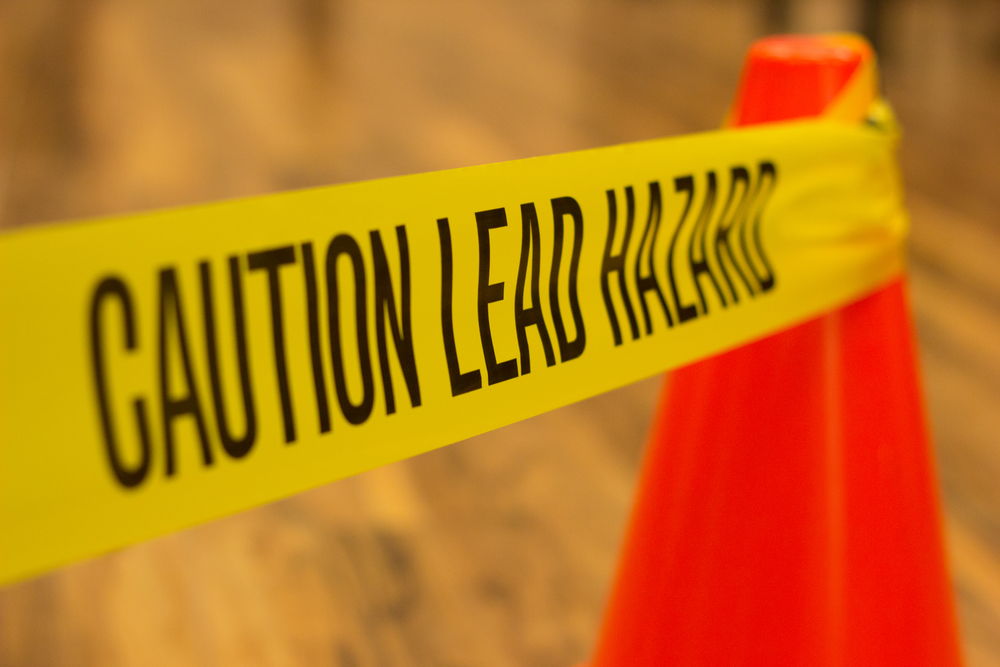Lead is an extremely poisonous metal that, when breathed or consumed, may affect the central nervous system and is regarded as one of the primary environmental issues in homes, commercial properties, and workspaces. Lead-based paint has the greatest harmful effects on children, infants, and mothers of childbearing age, which is why house sellers must warn potential homebuyers about the hazards on their premises. Typically, the seller should disclose hazard communication in a written document.
If you work in real estate, you must comply with the real estate notification and disclosure rule. Note that the rule on disclosure does not exempt sellers selling their property ‘as is.’ As long as you sell homes, the disclosure rules affect you, so you must familiarize yourself with the rules and adhere to them.
A seller can be sued and even convicted of a crime if they willingly conceal this information from a buyer. Therefore, if you are a seller, it would be best to check your local law to determine the disclosure requirement in your area. This article will go over everything you need to know about a seller’s responsibility of disclosing lead-based paint hazards and more.
What Are a Seller’s Responsibilities to Disclose Lead-Based Paint Hazards?
Congress enacted the Residential Lead-Based Paint Hazard Reduction Act in 1992 to safeguard homeowners and occupants from lead exposure from paint, dust, and soil. This requires revealing existing information about lead paint and its risks prior to the sale or lease of dwellings constructed before 1978.
Sellers must disclose complete information to buyers, even if it negatively impacts their profits. A seller’s disclosure is essentially a law or rule requiring all sellers to provide buyers with all the necessary information about their property. This is even more important if the said property has lead-based paint, as lead is hazardous.
The United States Environmental Protection Agency (EPA) has a disclosure form that sellers are required to use when making transactions in residential property. If the property they are selling has any lead-based paint hazards, they must disclose this information. Discussed are some seller responsibilities to reveal lead-based paint hazards.
Provide Potential Buyers With an EPA Pamphlet on the Hazards of Lead
EPA has a pamphlet known as protect your family from lead in your home that all sellers are required to give prospective buyers. The pamphlet is quite informative and talks about things like:
- Eliminating or reducing lead-based paint hazards
- How you can identify lead-based paint
- Lead’s health effects
If you are a buyer, you have to acknowledge receipt of the EPA pamphlet and the information on lead-based paint hazards on the EPA disclosure form. If you are a seller, ensure you keep the signed acknowledgement of the buyer’s disclosure for a minimum of three years from the sale of the property.
Disclose Lead-Based Paint Hazards
Sellers must provide buyers with all the necessary information and any other reports on lead-based paint hazards on their property. It is worth noting that this must be done before the prospective buyer signs the contract to buy the house. Whether the lead-based paint hazards are in the exterior or interior, sellers must disclose this information.
As aforementioned, EPA has a disclosure form for this particular purpose. If you are a seller, the law does not mandate you to remove or test for lead-based paint. It only requires you to disclose the information you know to the buyer.
Allow Buyers to Carry Out a Lead-Based Inspection or Risk Assessment
A seller’s responsibility is to allow a buyer ten days to perform their lead-based inspection or risk assessment. However, this period may be waived, shortened, or lengthened if both buyer and seller have a mutual agreement. Note that most states require a certified lead abatement worker to perform the job.
Sellers can stay ahead by getting a professional to test for lead on their property and have a professional remove it if it is present. It is possible to contain lead paint by repainting your property, but you still need to disclose it to a potential buyer. It would be best to get a professional to paint over the lead-based paint, especially peeling or chipping.
Why Is It Important for a Seller to Disclose Lead-Based Paint Hazards
Generally, lead-based paint tends to be more present in older houses built before 1978. Over the last twenty years, it has become clear that one’s health is directly linked to the condition of their home. It is worth noting that thousands of children have high lead levels in their blood, leading to attention disorders.
Lead hazards are not obvious, so it helps to get a certified professional to conduct a thorough property assessment to check if the lead is present. Sellers must disclose lead-based paint hazards, so buyers can make an informed choice on whether they want the risk mitigated, tested, and investigated.
Sellers should also disclose lead-based paint hazards to potential buyers, as failure to do so or making mistakes on the disclosure form could result in a lawsuit. For instance, the buyer could claim that the seller did not accurately fill out the disclosure form. As a result, the seller will end up incurring expensive legal fees.
As mentioned, sellers must keep the signed disclosure form for at least three years after selling the property. If such an ordeal occurs, a seller has the signed documents to back them up. While some states may use federal lead-based paint disclosure forms, others have customized disclosure forms that comply with the federal lead-based paint disclosure requirements.

Conclusion
The lead-based paint disclosure form is brief, but it carries a lot of weight and obligations. Failure to correctly disclose lead-based paint dangers may cost you a lot of money, since it is a federal requirement to be followed in almost all real estate transactions.
There are just a few exceptions to this rule: residences sold as foreclosures, efficiency flats, and housing for the elderly or disabled where no children under the age of six are likely to stay. If you are buying or selling property constructed before 1978, you must use this form and declare any knowledge you may have regarding lead-based paint or lead-based paint dangers in the residence.
Visit ZOTApro Today
ZOTApro offers professional training and allows you instant access to several top-rated professional development and certification courses. The course instructors are experienced professionals who connect the teaching to real situations, so applying what you have learned in your profession is easy. Whether you want an introductory or refresher course, you can find it on ZOTApro. Contact us today for more information.


